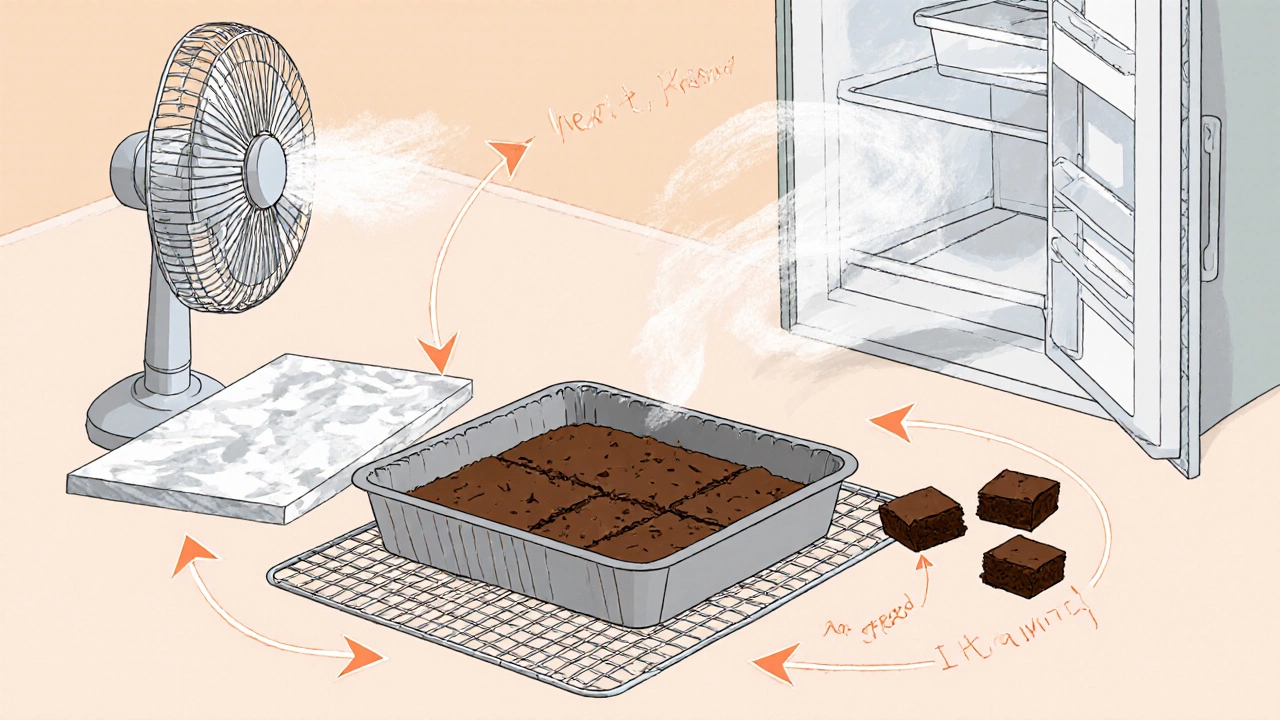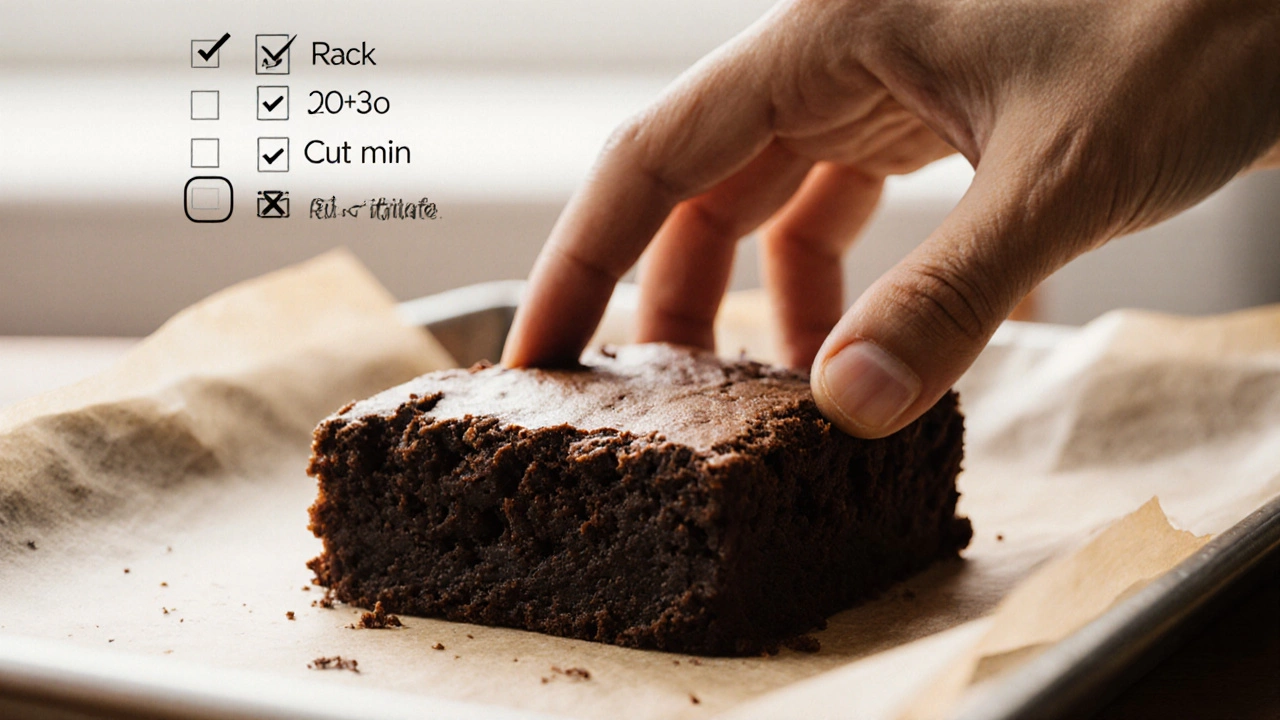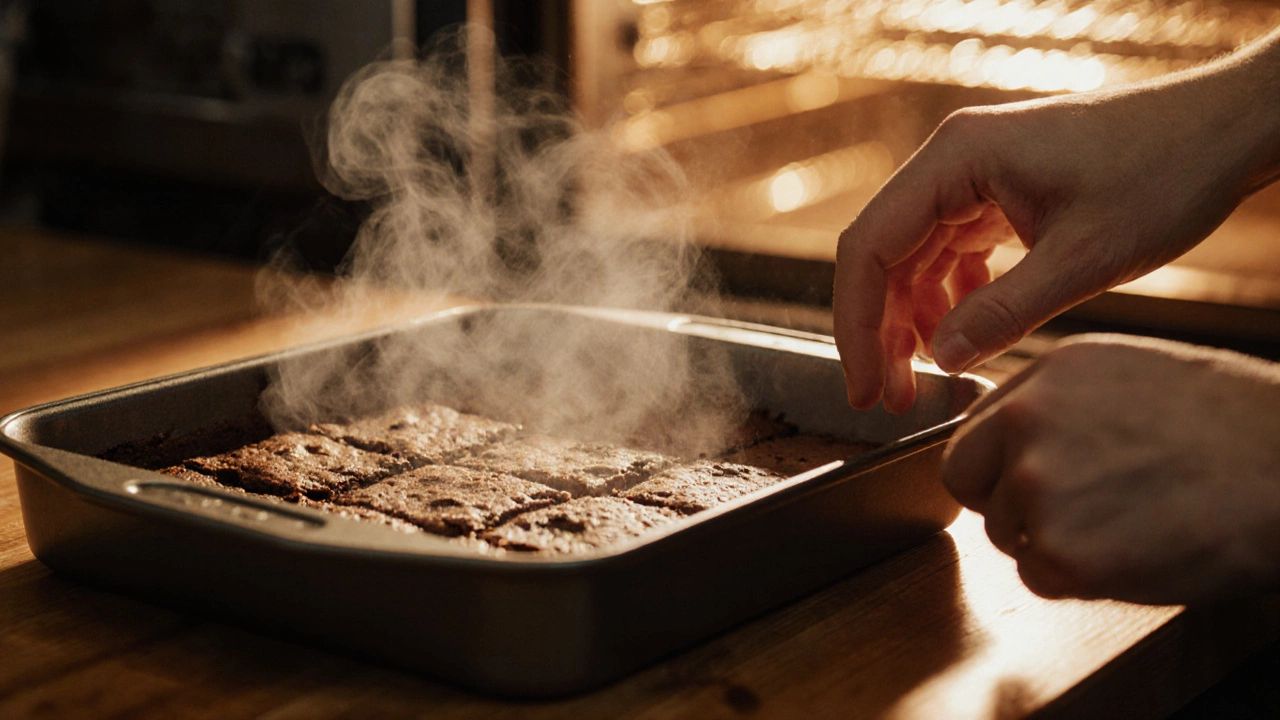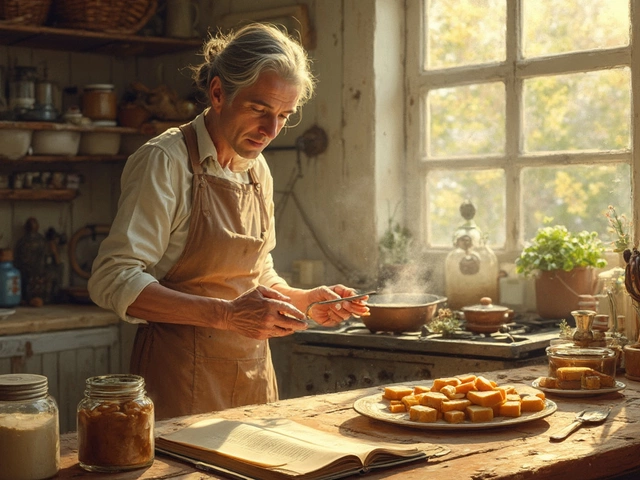Brownie Cooling Time Calculator
Adjust Cooling Factors
Result
30 minutes
Allow 30 minutes for room temperature cooling with metal pan.
Baking Tip:
For best results, check texture after 25 minutes.
Brownies are one of the most beloved home‑baked treats, but their texture can swing wildly depending on how you handle the cooling stage. Pull a pan out of the oven and you might be tempted to slice and serve immediately, only to discover a gummy centre or a crust that crumbles. Understanding the right brownie cooling time can turn a decent batch into a crowd‑pleaser every single time.
Why Cooling Matters
The moment the heat leaves the batter, the starches and sugars begin to set. If you cut too early, the internal structure is still fluid, which leads to a soggy bite and mess on the cutting board. Wait a bit longer, and the crumb firms up, giving you that signature fudgy‑chewy balance. In short, cooling is where the magic of texture actually happens.
Typical Cooling Times
- Room‑temperature rest: 20-30 minutes on a wire rack.
- Refrigerator chill: 45-60 minutes for a firmer slice.
- Freezer blast: 10-15 minutes (only if you need quick service).
These numbers assume a standard 8‑inch square pan, a moist batter, and an average kitchen temperature of about 70°F (21°C). Adjust up or down based on the variables listed below.
Factors That Influence Cooling Speed
- Pan material: Metal pans (aluminum or steel) conduct heat away faster than glass or ceramic.
- Batch size: A thick, dense brownie will retain heat longer than a thin, airy one.
- Ambient temperature & humidity: Warm, humid kitchens slow down evaporation, extending cooling time.
- Added toppings: Frosting, caramel, or a dusting of powdered sugar creates an additional insulating layer.
- Oven residual heat: Some ovens stay hot for several minutes after the timer hits zero, keeping the pan warmer.
Keeping these factors in mind helps you fine‑tune the waiting period for any recipe.

Practical Tips to Speed Up Cooling
When you’re in a rush, a few kitchen tricks can shave minutes off the process without ruining texture.
- Transfer to a cooling rack: Using a Cooling Rack exposes both the bottom and sides to air, cutting cooling time roughly in half.
- Cut the pan into squares early: Once the edges feel set (about 15minutes), slice the brownies. Smaller pieces lose heat faster.
- Place the pan on a pre‑cooled surface: A marble slab or chilled baking sheet accelerates heat transfer.
- Fan assistance: A low‑speed kitchen fan directed at the pan creates gentle airflow, boosting evaporation.
- Use the fridge wisely: If you need a firmer slice, pop the pan (still on the rack) into the refrigerator for 30minutes. Avoid the freezer unless you’re serving within an hour.
Common Mistakes to Avoid
Even seasoned bakers slip up sometimes. Here are the pitfalls that sabotage brownie texture:
- Removing the pan from the oven and setting it directly on the counter without a rack - the bottom stays hot, leading to uneven cooling.
- Covering the pan with foil or a towel too early - trapped steam makes the crumb soggy.
- Cutting before the edges are firm - the knife can pull the batter, creating ragged edges.
- Refrigerating a warm pan - condensation forms, soaking the bottom layer.
Quick Reference Checklist
| Step | What to Do | Why |
|---|---|---|
| 1 | Place pan on a cooling rack immediately. | Even air flow speeds up heat loss. |
| 2 | Wait 20‑30min for initial set. | Starch and sugar molecules finish setting. |
| 3 | Cut into squares if you need faster cooling. | Smaller pieces lose heat quicker. |
| 4 | Refrigerate for 45‑60min for firm slices. | Chills the interior without drying out. |
| 5 | Avoid covering until fully cooled. | Prevents trapped steam and sogginess. |

When to Trust the Feel, Not the Clock
Even a solid rulebook can’t replace a baker’s intuition. Gently press the top edge of the brownie with a fingertip - if it feels springy but not liquid, it’s ready. The edges should pull away from the pan easily. When in doubt, give it an extra five minutes; a slightly over‑cooled brownie is still delicious, while an under‑cooled one can be disastrous.
Mini FAQ
Frequently Asked Questions
Can I freeze brownies right after they come out of the oven?
No. Freezing a hot pan creates condensation that makes the bottom soggy. Cool them at room temperature first, then wrap and freeze for longer storage.
Do I need to let brownies cool before frosting?
Absolutely. A warm surface melts frosting, turning it into a glaze. Let the brownies cool at least 30minutes, or chill briefly in the fridge, before applying any topping.
Is it okay to cut brownies while they’re still warm?
If you need a soft, gooey center, cutting while warm works, but the pieces will be messy and may stick to the knife. For clean slices, wait the full cooling window.
How does pan size affect cooling?
Larger pans spread the batter thinner, so heat dissipates faster - you may need only 15‑20minutes. Smaller, deeper pans keep heat longer, pushing the cooling time toward 40minutes.
Should I cover brownies while they cool?
Avoid covering until they’re completely set. A loose tent of foil after the first 30minutes can keep dust out without trapping steam.
Mastering the cooling stage isn’t glamourous, but it’s the difference between a brownie that falls apart and one that holds its shape with a velvety bite. Follow the guidelines, watch the texture, and you’ll be serving perfect brownies every time.





